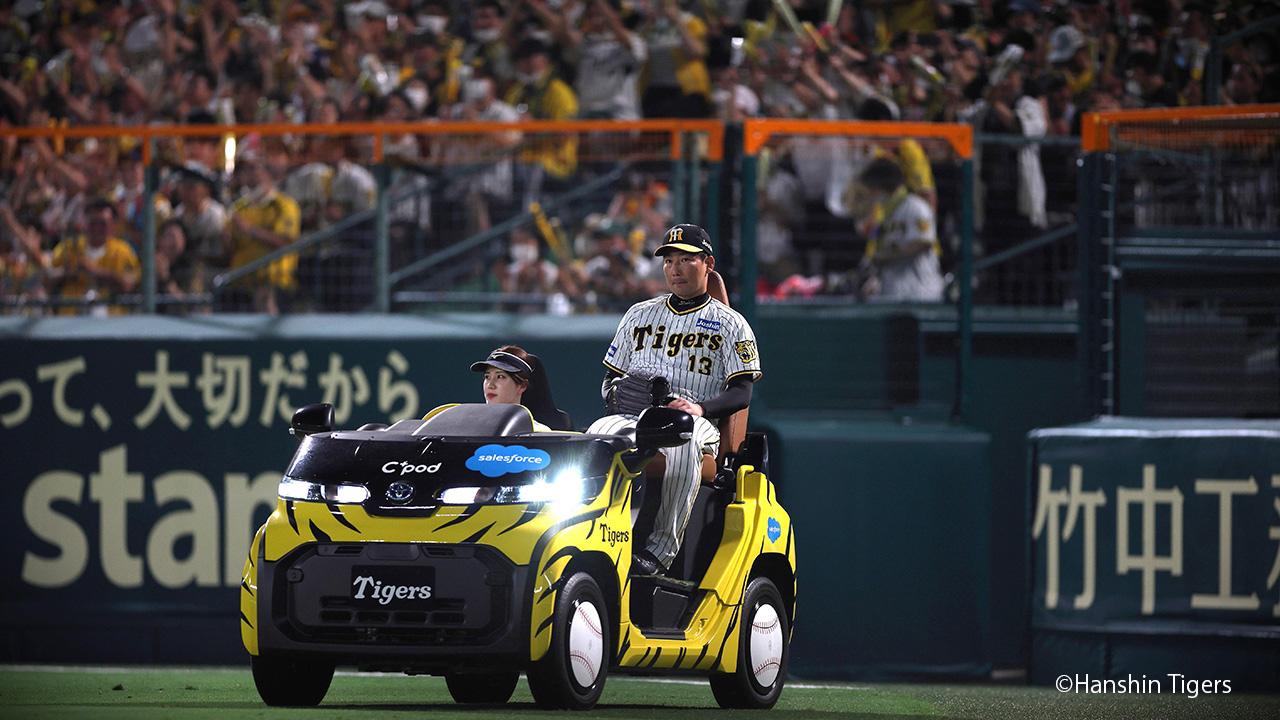
Car designers chat about their work at Hanshin Koshien Stadium, sharing behind-the-scenes stories on the day the Tigers clinched the title.

Koshien Stadium, home of the Hanshin Tigers, a proffessional baseball team in japan, is buzz with excitement following the team’s first league title in 18 years. It is also a great place to see Toyota’s mobility in action.
The vehicle in question is a bullpen car that takes relief pitchers from the warmup area to the mound during pitching changes. Only four teams in Japanese professional baseball use bullpen cars, a form of mobility that is also rare on the world stage.
Let’s start by experiencing the journey to the mound vicariously through this rare video, which puts you in the shoes of a pro baseball player.
Later in the article, we also share comments from Hanshin Tigers pitcher Suguru Iwazaki.
Why the Tigers turned to Toyota
Final inning, tied game. The closer gallantly takes the field to get his team out of a tight spot...
This is also the bullpen car’s time to shine. When Hanshin Koshien Stadium rolled out a new model in the spring of 2022, there were two reasons behind the update.
First is the width of the passage along which the car travels.
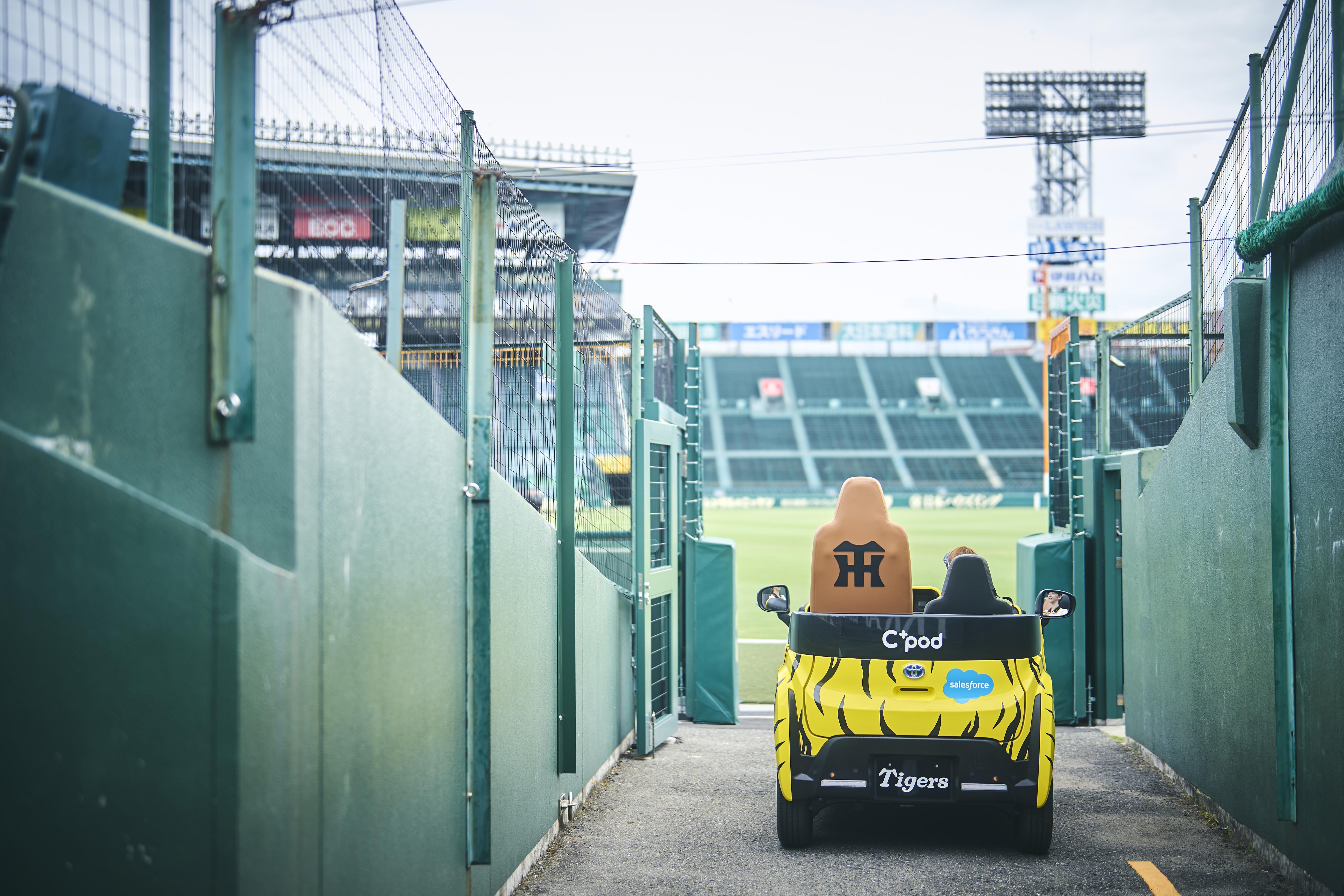
The narrow corridor is only big enough for a compact vehicle. Yet once pitchers were warmed up, the last thing the team wanted was to give them a cramped ride out to the game.
The second reason was environmental concerns. In December 2021, the stadium announced the KOSHIEN “eco” Challenge. As part of this environmentally-friendly initiative, one idea was to make the bullpen car a battery electric vehicle (BEV). Toyota was approached in the fall of 2021, and the project got underway.
As it turned out, a host of obstacles awaited. Naoki Nagatsu, Professional Partner at Toyota’s Vision Design Division, reveals the backstory.
Nagatsu
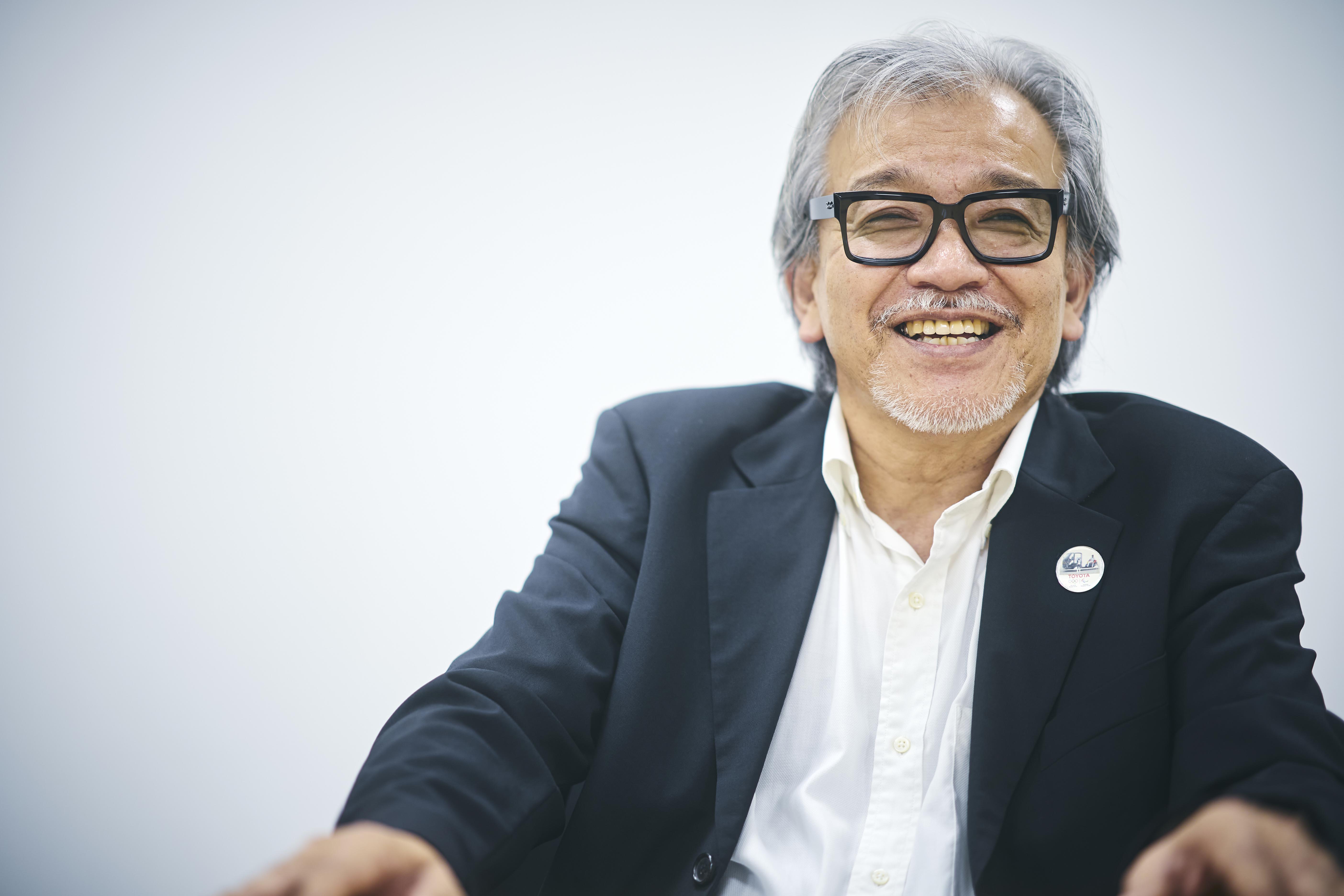
With only about three months of development time to deliver the car, we figured we would use the APM (a low-speed, short-distance BEV), which Toyota provided as last-mile mobility for the 2020 Olympic and Paralympic Games in Tokyo.
As soon as we looked at the stadium, however, it was obvious that the passageway was too narrow for the APM. Of course, there was no time to develop a new vehicle, so we settled on using the C⁺pod.
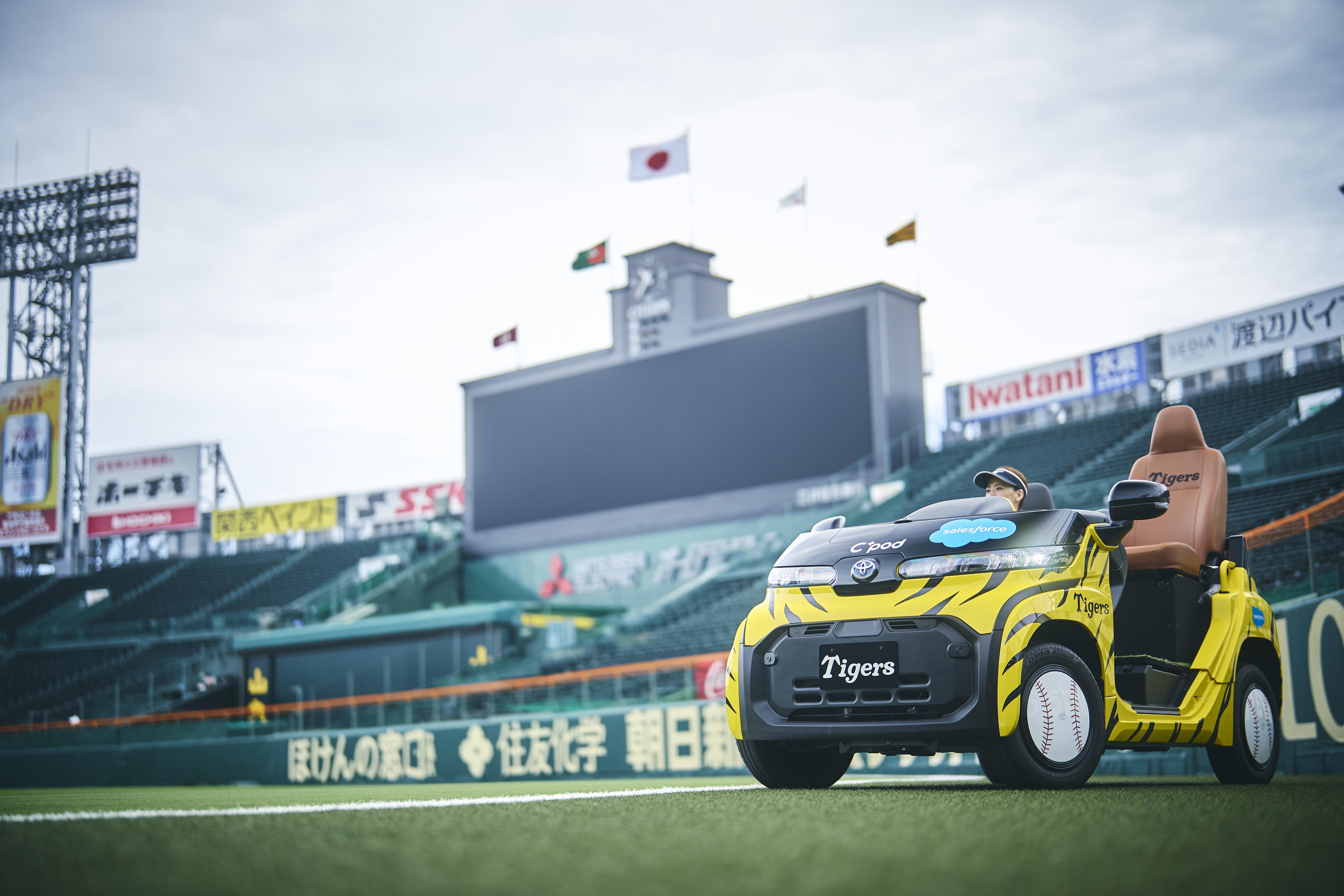
Although the C⁺pod ultra-compact BEV was never intended as a convertible, fortunately, it was structurally strong enough to allow such a modification.
Moreover, the body, made of resin to reduce weight, proved easy to customize.
Bring on the final boss
Next, it was time to come up with a design. Nagatsu began by researching the Hanshin Koshien Stadium’s history. He also visited the Tigers' team shop to find out what caught the eye of Tigers' fans.
By that point, he had his concept.
Nagatsu
For the design, we envisioned this as the ride that brings out “the final boss.”
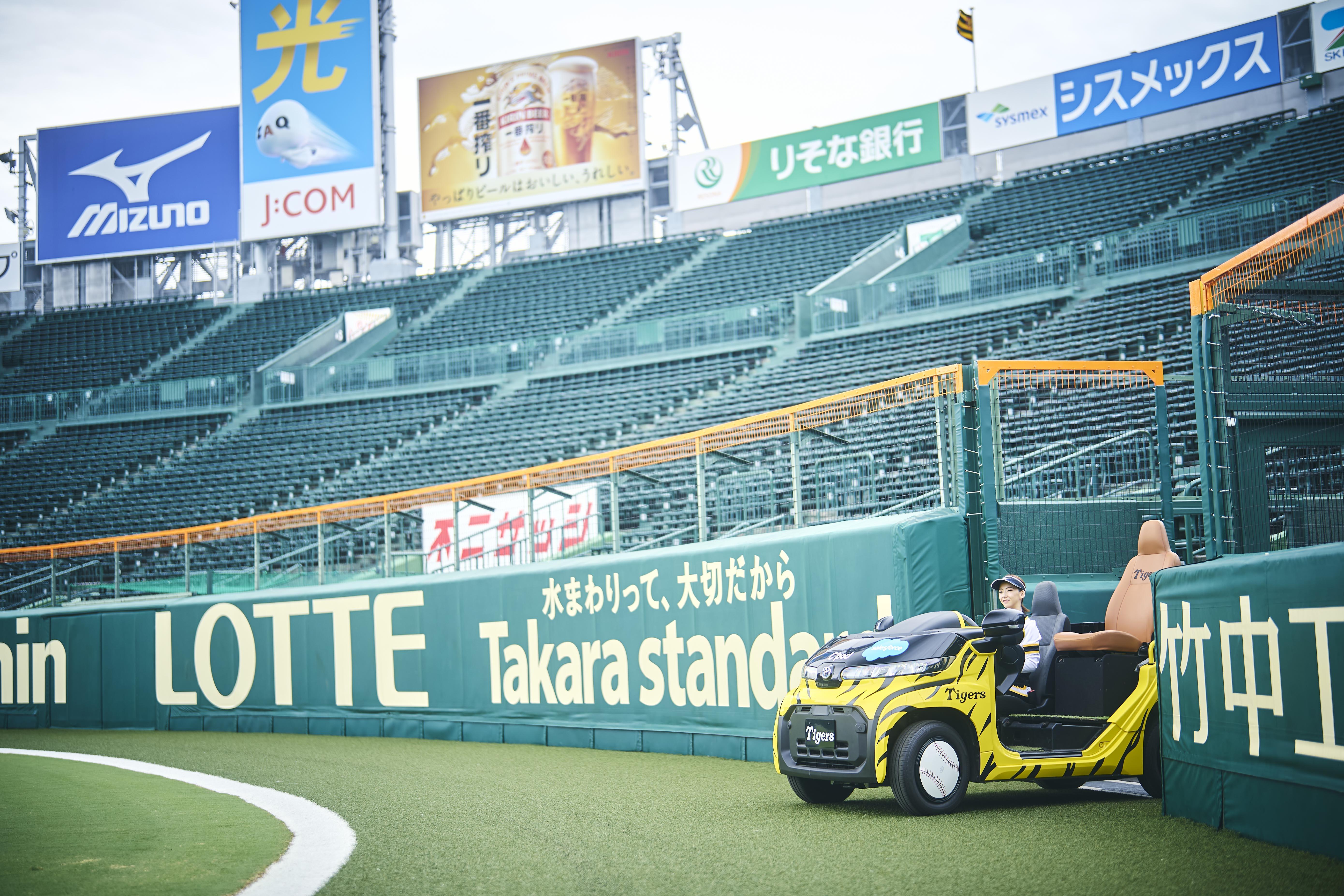
A pitcher entering the game in the late innings arrives as a savior, coming to overpower the other side into submission. While working out the details, we also considered how it would show up on TV.
To carry big-bodied professional baseball players, the vehicle also had to meet many other requirements. Mid-size Vehicle Company Project General Manager Daisuke Ido oversaw the car’s development.
Ido

Because pitchers are tall, extra legroom was a must-have. Unfortunately, the C⁺pod’s size means you don’t get much room even if you move the seat all the way back.
That’s when we came up with raising the seat. We suggested three different heights, being mindful of the injury risks as players get out of the car.
The Hanshin Tigers opted for the highest seat setup.
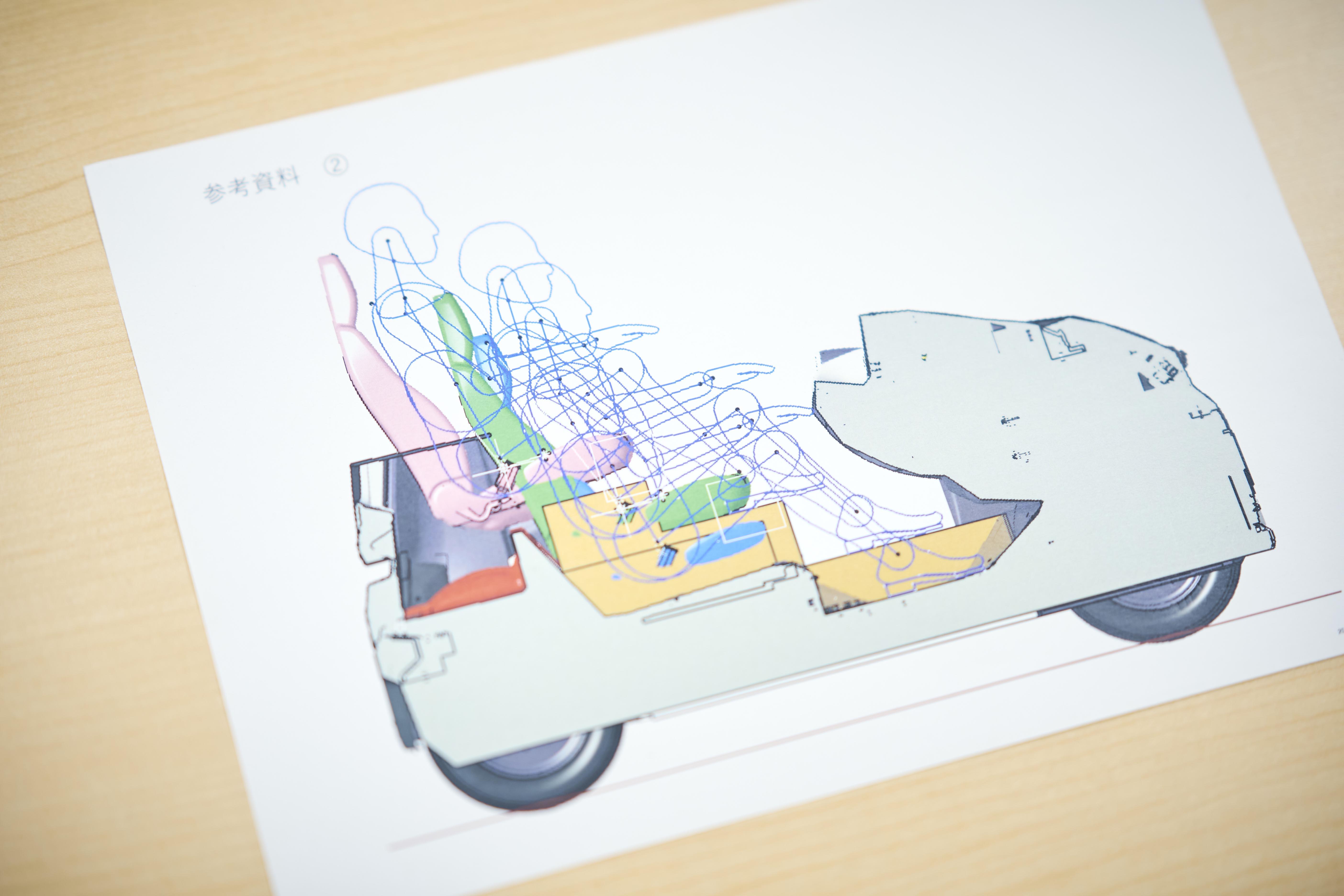
Nagatsu
On a snowy day at year’s end, we invited staff from the Hanshin Koshien Stadium and the Tigers to visit us in Toyota City and test out the height for themselves. They confirmed that a 185cm pitcher wearing cleats could get on and off safely. The final decision was made on location, with genchi genbutsu.
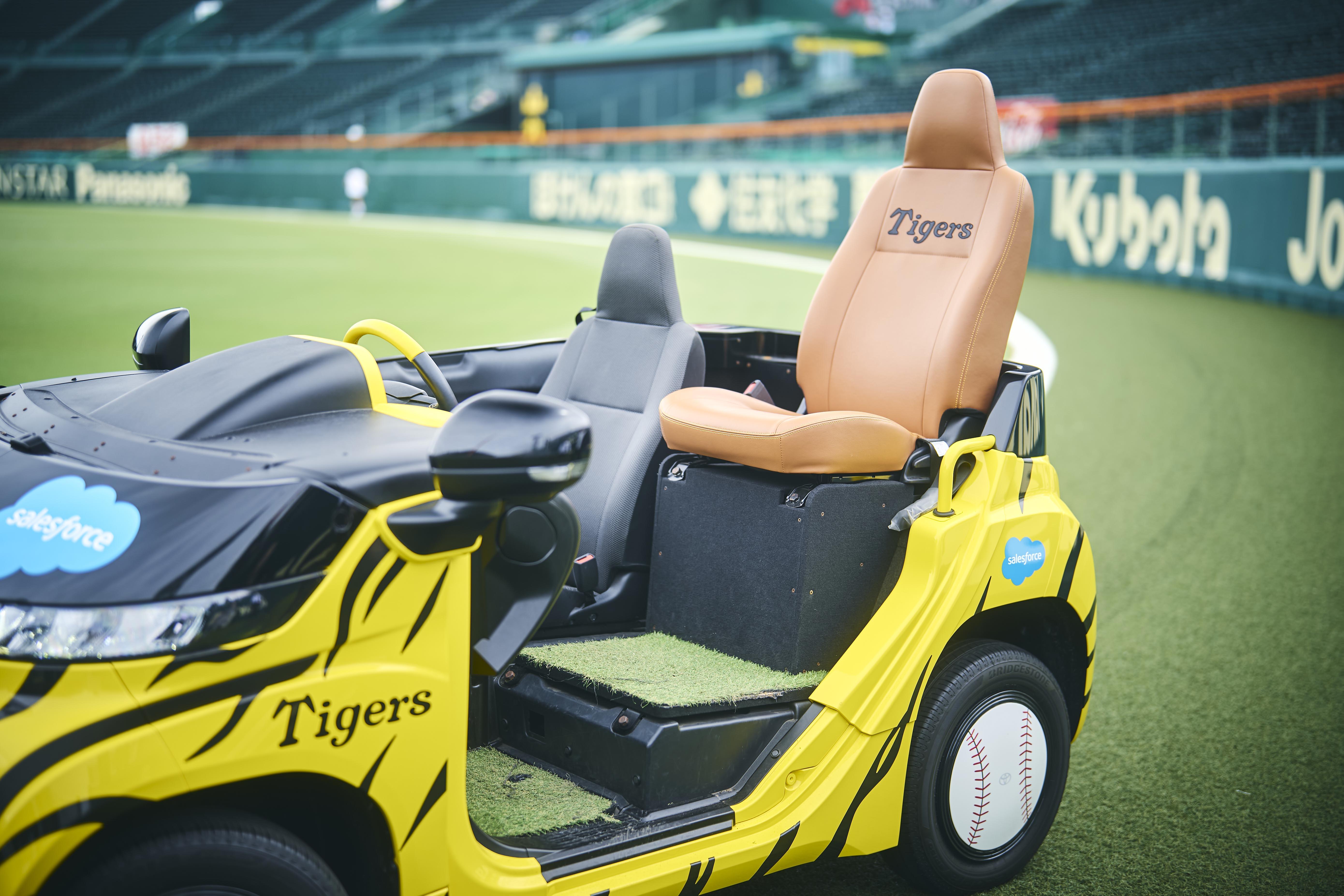
At first glance, the bullpen car looks like an ordinary convertible, yet it is full of features designed for ease of use, safety, and bringing excitement to the ballpark.
On the next page, we delve into the details that don’t show up on TV screens.

